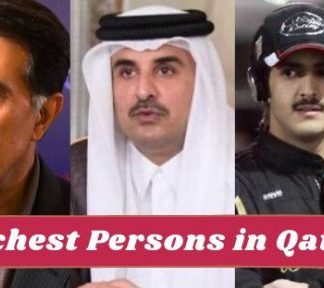Yemenis fear they could suffocate due to intermittent electricity and soaring temperatures in new housing units.
Markazi refugee camp, Djibouti – He survived Saudi-led air raids, Houthi snipers and a perilous boat journey from Yemen to Djibouti. But for Ahmad Muhammed Ali, the next few months could be the toughest of his life.
For three years, he says he merely “existed” at one of the UN-funded tents in the Markazi refugee camp.
Surviving on meagre portions of food and routinely being stung by scorpions and bitten by snakes; he prayed for his family’s circumstances to change.
The eldest of four children, Ali said it was his “duty” to look after his siblings and mother after their father passed away.
So, in November, when Saudi Arabia inaugurated 300 shipping-container style housing units, he thought his prayers had finally been answered.
In a ceremony marked with pomp and celebration, the Saudi and Djiboutian governments unveiled the units to accommodate around 1,200 Yemeni refugees at Markazi, along with a mosque, a school, and two medical centres.
Costing a reported $6.5m, less than the price of five Raytheon Tomahawk cruise missiles, Ali, like many of the camps residents rejoiced, hopeful that the project would generate more funding and development from the oil-rich kingdom.
But only three months in, temperatures inside Ali’s unit are already exceeding 35 degrees, raising fears that intermittent supplies of electricity could make the steel units “worse than ovens,” and potentially death traps.
“We get about four hours of electricity in the morning, and then another four hours in the evening,” the 24-year-old told Al Jazeera, his brow dripping with sweat.
“The authorities switch off the power at around 1pm because of fears the generators might get hot and damaged.
“So we stay in indoors for about an hour after lunch, but once it gets really unbearable, we head outside. It’s cooler outside than it is inside”.
 |
| Each air-conditioned residential unit includes a toilet, bedroom, living room and kitchen, along with cooking facilities [Faisal Edroos/Al Jazeera] |
‘I want to be resettled in Mexico or Brazil’
A tiny nation of around 800,000 people, Djibouti became a haven for Yemeni refugees in March 2015 after the country’s civil war embroiled the region.
At the time, Saudi Arabia, alarmed that a Shia group with ties to Iran had taken over parts of their southern neighbour, intervened at the request of Yemen’s President Abd-Rabbu Mansour Hadi.
Expectations were high that a coalition assembled by Saudi Arabia, with all its military might, would crush the rag-tag alliance of Houthi fighters and army forces loyal to former President Ali Abdullah Saleh within a matter of weeks.
But after nearly four years of fighting, and an estimated 60,000 deaths, the coalition has failed to pave the way for the recapture of the capital Sanaa.
Instead, tens of thousands of Yemenis have fled on small rickety boats across the Bab al-Mandeb Strait, known as the Gate of Tears – a name derived from the long history of people perishing when trying to cross it.
At least 37,248 people have arrived in Djibouti, which sits just 32km from Yemen, with around 2,200 Yemenis currently registered at the Markazi camp.
For its part, the Djiboutian government has tried to welcome the Yemenis, introducing new laws making it easier for them to find work.
But with the unemployment rate hovering at around 45 percent, and few Yemenis speaking French, the local lingua franca, most have opted to either head to other countries or return home.
 |
| With wind speeds as high as 60kph, this year’s Khamsin dust storm coincides with the start of Ramadan [Faisal Edroos/Al Jazeera] |
In an attempt to make the best of their situation, Ali said his mother sold all of her jewellery to start up a small business in their living room.
Sitting on a thin mattress in a bedroom that he shares with his younger brother, he signalled towards his mother Hayfa who was trying to sell cold drinks, cigarettes, and lollypops in their living room as the warm air carrying sand swept in through the door, lashing her face.
“She sacrificed everything to make our lives tolerable,” he said, as his eyes drifted to a damaged TV playing a dance scene in Shah Rukh Khan’s 2004 blockbuster Bollywood flick, Kal Hoh Naa Ho.
“She sold all her jewellery to start this shop and make it work. But I’ve had enough. I don’t want to live here.
“I want to be resettled in Mexico, Brazil or Canada. Somewhere where I’m free to do what I want. Or somewhere where it’s cold”.
 |
| Ahmed Muhammad Ali says his mother sold all her jewellery so the family could start their business [Faisal Edroos/Al Jazeera] |
‘Ramadan will be very bad’
Many of the residents told Al Jazeera they were dreading the summer months which are accompanied by the “khamsin”, a ferociously hot sandstorm.
With temperatures reaching 50 degrees Celsius and wind speeds as high as 60kph, this year’s dust storm coincides with the start of Ramadan, the daily fasting period that begins in May.
Refugees such as Ali will be hungry, hot and have little to do.
“When Ramadan comes it will be very bad,” said Ali’s mother Hayfa, as she served a customer two individual cigarettes.
“We started buying ice from the capital (two half hours away by boat), so God willing, the chocolates and cakes won’t melt”.
 |
| The entire project cost a reported $6.5m, less than the price of five Raytheon Tomahawk cruise missiles [Faisal Edroos/Al Jazeera] |
The UNHCR, which assists the Djiboutian government in running Markazi, said it was doing what it could to help the refugees, but acknowledged conditions remained primitive.
“We hope that there will be continuity and the people will stay in the units, and that there will be funding for electricity in the summer,” Vanessa Panaligan, the UN‘s media relations officer in Djibouti told Al Jazeera.
|
|
“But if the refugees head back to the tents they will have to contend with the Khamsin winds and the camps are not built to withstand that.
“The sand gets everywhere, so they should be better protected with the housing units against the hot winds, the sand and the elements”.
Trying to keep a brave face, Hayfa said she hoped sustained media coverage would help shed a light on what was happening at the camp.
“I’ve spent a fortune starting this business, but for many reasons, I couldn’t go forward. I was subject to harassment and people have tried to take advantage of me.
“I wanted to buy a house here, a car, to settle down with my children, But we can’t because we’re foreigners and refugees.
“Now, our only hope is that the war ends and some of the Arab countries take us in.
“We don’t want to go to the West, we want our Arab and Muslim brothers to let us in.”
 |
SOURCE: aljazeera.com


























